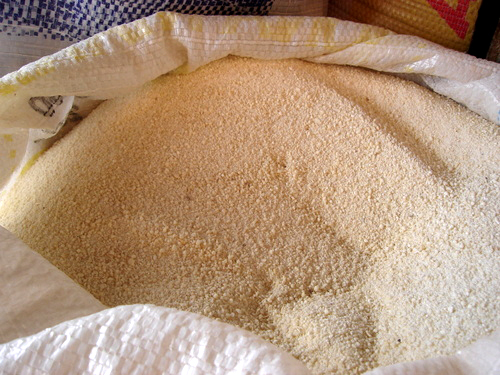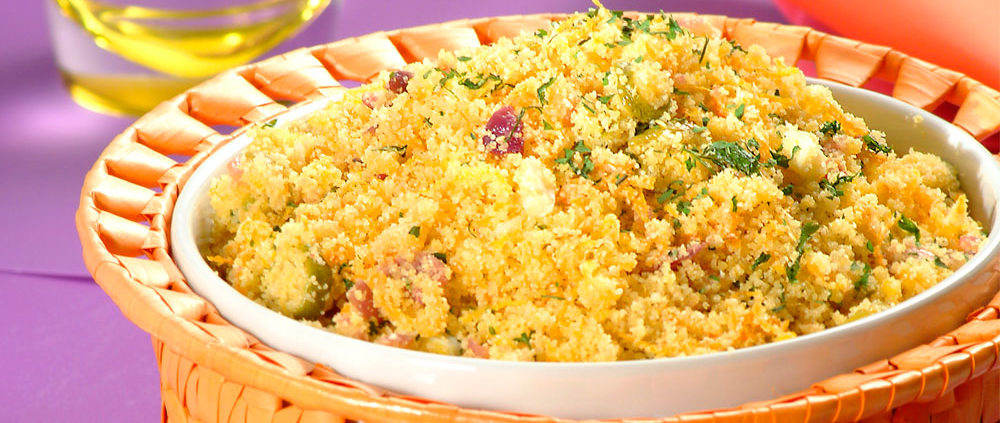Farofa – The Universal Accompaniment
When Brazilians eat grilled or roasted meat or fish, the side dishes are plain white rice, beans and a golden-colored mixture with a sandy texture called farofa. Eating churrasco, the Brazilian-style mixed grill cooked over charcoal without a dish of farofa to accompany it is considered culinary heresy.
There are infinite variations and thousands of recipes for farofa, but at its most basic farofa is a mixture of dry manioc flour ( called farinha in Portuguese) toasted in some sort of fat to flavor and moisten it. The fat can be butter, it can be bacon fat and in Bahia (state in the northeast of Brazil), where African culinary traditions rule, it’s like to be dendê, the brilliant orange palm oil that is the herald of Bahian cooking.

Manioc itself, of course, is a heritage of Amerindian cooking traditions in Brazil and the only truly native staple food in this country. This protean tuber appears at the Brazilian table in a startlingly large number of forms – so many and so different that it’s hard to imagine they all come from the same plant. Manioc can be mashed or french-fried like potatoes, it can be made into breads and pastries, or it can show up as tapioca, which in Brazil means a crepe, not a dessert pudding. But it is as farofa that it’s most commonly found on the dinner table.
Besides the use of different forms of fat to vary the basic recipe, Brazilian chefs also occasionally add other flavoring ingredients such as onion, crispy bacon bits or shredded carne de sol (dried jerky). Sometimes fresh herbs, particularly cilantro and chopped green onion, are added to give the farofa a fresh touch. Day-to-day farofa is likely to be more basic, however.
In Brazilian supermarkets it’s possible to buy packages of farofa, pre-made. Most Brazilian cooks, though, still make it at home, preferring freshly cooked farofa to the industrially prepared variety.
Just as there are many different ways to cook farofa, there are many different ways to eat it. Some people like to sprinkle farofa directly on the grilled meat or fish. This is particularly popular when eating churrasquinho, Brazil’s meat-on-a-stick take on kebabs. Some prefer to mix all the side dishes on their plate, the rice, the beans and the farofa, to make one all-purpose accompaniment to the meal’s centerpiece. Others like to dip each forkful of meat into a pile of farofa before popping it into their mouth. And some, farofa’s most ardent fans, will eat theirs straight up, not mixing it with anything else.
Because of the characteristically sandy, gritty texture of manioc flour and it’s relative lack of flavor, visitors to Brazil are often puzzled by farofa. They don’t appreciate the texture, likening it to beach sand, and they don’t see what it adds to the dining experience. But non-Brazilians who spend some time in this country often find that the habit of eating farofa eventually sneaks up on them. At some point in the Brazilianization process, they are likely to discover that a plate of grilled meats without farofa looks bare and incomplete. They’ve become farofasized.




